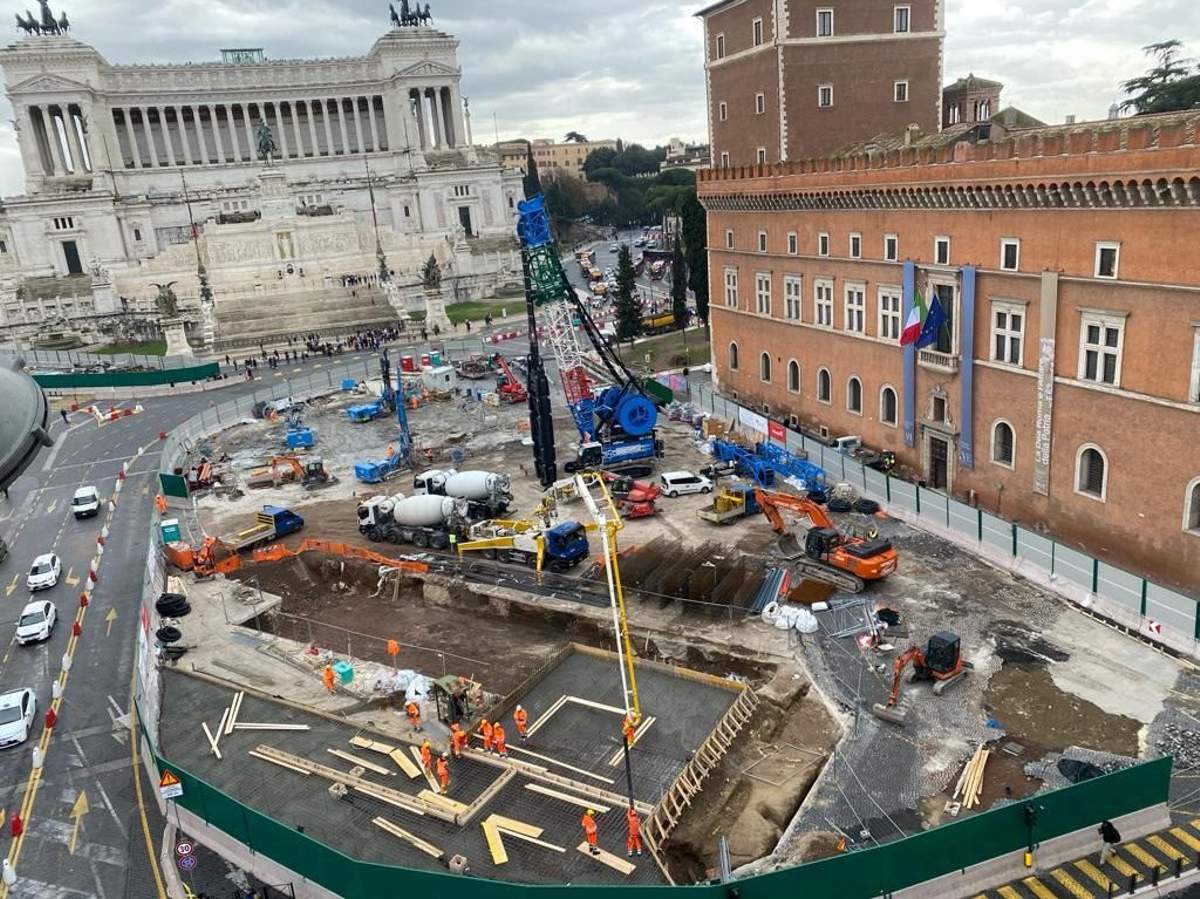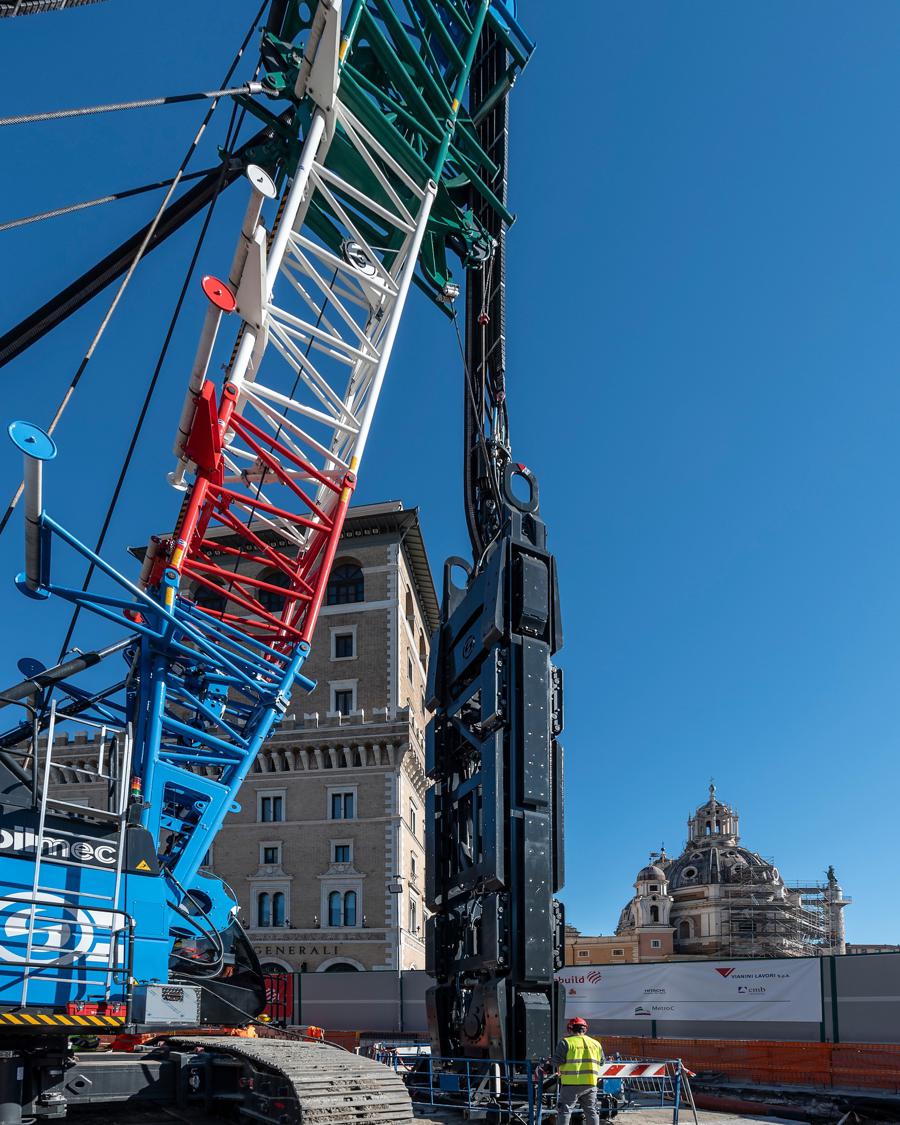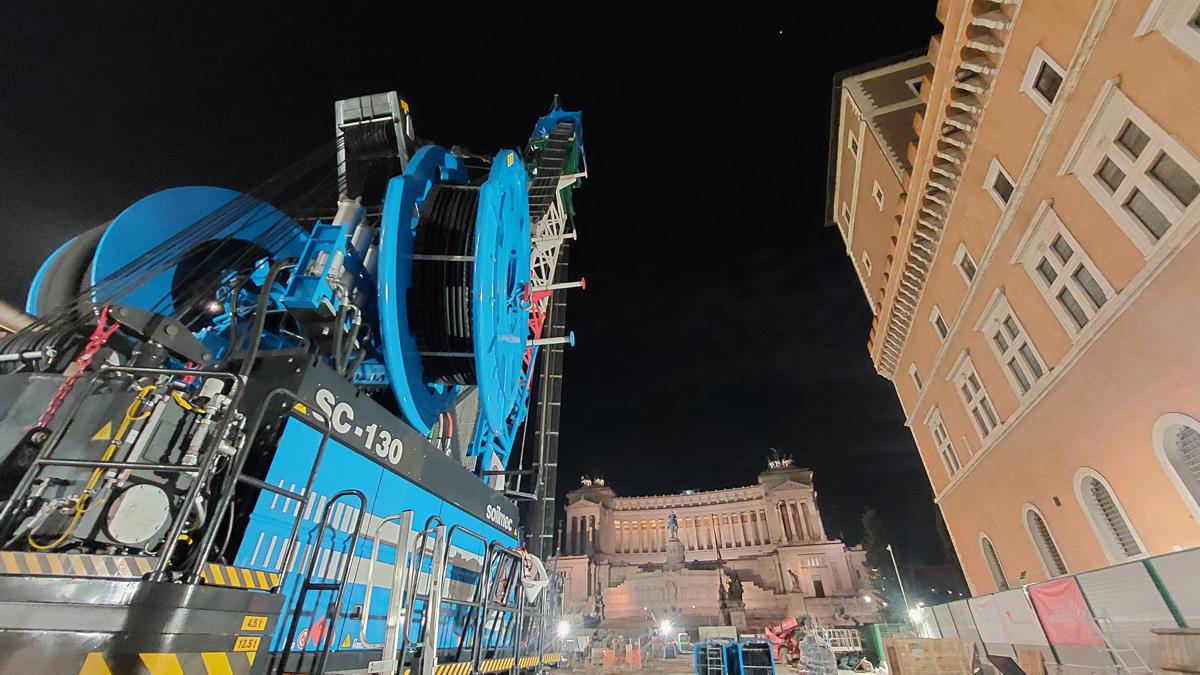Venezia Station will create a new Archaeological Marvel in Rome
In the heart of Rome, a ground-breaking project is underway that promises to redefine the intersection of modern infrastructure and ancient history.
The forthcoming Venezia Station on the Metro C line is poised to become not just a transit point, but a journey through time itself. Dubbed as an “archeostation,” this marvel of engineering and historical preservation will offer both locals and the millions of tourists who flock to the city each year an unparalleled experience.
A Museum Among Museums
Nestled forty-five meters beneath the bustling streets of Piazza Venezia, the station’s design is as breath-taking as it is ambitious. With perimeter walls bolstering the excavation site down to a staggering depth of 85 metres with the aid of the new Tiger SC-130 plus milling machine from Soilmec, the engineering division of Trevi Group, which will be a critical to to make the panels.
Venezia Station will stand as a testament to human ingenuity. It’s more than just a stop on a metro line; it’s a portal to the past, designed to seamlessly integrate into the rich tapestry of Rome’s historical centre.
Imagine stepping off a train and into a museum, where the very platform you stand on bridges the gap between the present and antiquity. The station will boast three entrances, each serving as a gateway to some of Rome’s most iconic landmarks, including Palazzo Venezia, the Vittoriano, and the archaeological expanse of the Imperial Forums.

Archaeological Wonders Below Ground
As excavations for the station progress, the ancient corridors of Rome are brought to light once more. Among the treasures to be housed within the station’s confines are the halls of Hadrian’s Auditoria, unearthed during construction and to be presented in their original glory. These remnants of a bygone era will be repositioned along the ancient Via Flaminia, allowing passengers a glimpse into history as they traverse the station’s eight underground levels.
Spanning a total area of 4,500 square meters on each floor, the station is not just a hub for transportation but a sanctuary for history. The integration of these archaeological finds within a modern metro station is a feat of both engineering and conservation, offering a unique narrative of Rome’s lineage.
Connecting Rome’s Past with Its Future
The Venezia Station is more than a marvel of architectural design; it’s a crucial node in Rome’s extensive metro network. With planned interconnections to existing lines at Metro A San Giovanni and Ottaviano, as well as Metro B Colosseo and the FL1/FL3, the station ensures that Rome’s past is accessible to all.
Its strategic location and connectivity promise to enhance the flow of traffic across the city, easing the daily commute for residents while enriching the tourist experience.

A Visionary Undertaking
The project’s scope is vast, with a total of 26 kilometres of track, 17 of which are underground. This ambitious venture not only showcases Rome’s commitment to preserving its historical heritage but also its forward-thinking approach to urban development.
The station is a symbol of how cities can honour their past while embracing the future, providing a blueprint for others to follow.
A Step Into History
As construction progresses, the anticipation builds. The Venezia Metro Station is set to become a cornerstone of Rome’s transport system and a landmark in its own right. “As you enter the 8 underground levels, you will have the feeling of putting your feet inside a real museum,” says a spokesperson for the project. This initiative not only exemplifies Rome’s innovative approach to urban planning but also its reverence for the layers of history that lie beneath its streets.
The station’s design, deeply interwoven with the city’s archaeological fabric, offers a new paradigm for infrastructure projects worldwide. It challenges us to think beyond the functional aspects of public transportation, envisioning spaces that educate, inspire, and connect us to our shared heritage.

Looking Forward
As the world watches, the Venezia Station project unfolds as a testament to the enduring allure of Rome. It stands as a beacon of how modernity and history can coexist, enriching the urban landscape and the lives of those who navigate it. This “archeostation” is not just a stop along a journey; it’s a destination in itself, inviting us to explore the depths of history with each visit.
The Venezia Metro Station is poised to become more than just the world’s most beautiful “archeostation”; it’s set to be a landmark of innovation, a bridge between epochs, and a cherished addition to the Eternal City’s legacy.
As Rome continues to evolve, the Venezia Station will undoubtedly serve as a reminder of the city’s ability to harmonize the past with the present, crafting a future where history breathes life into the hustle and bustle of modern urbanity.



















